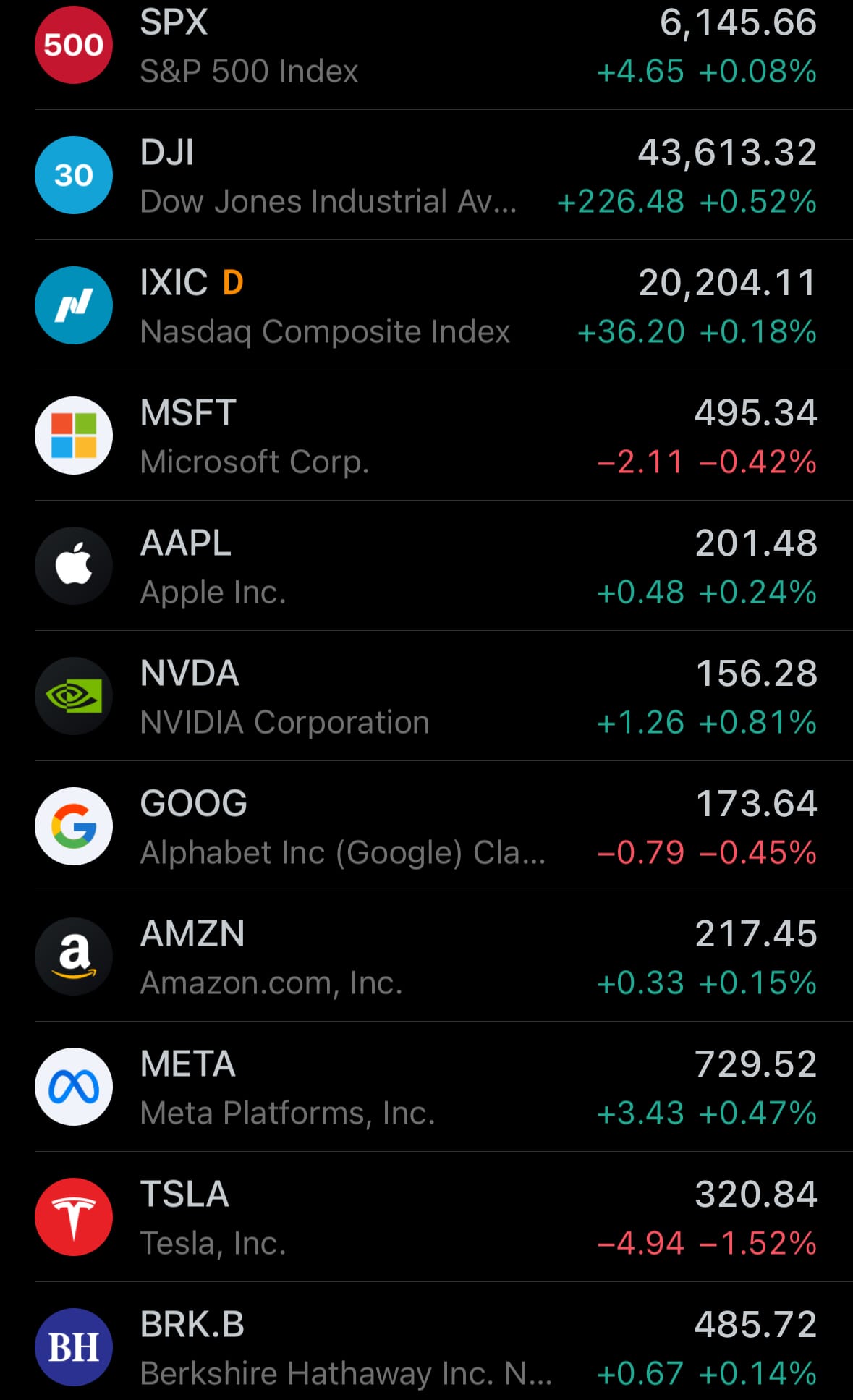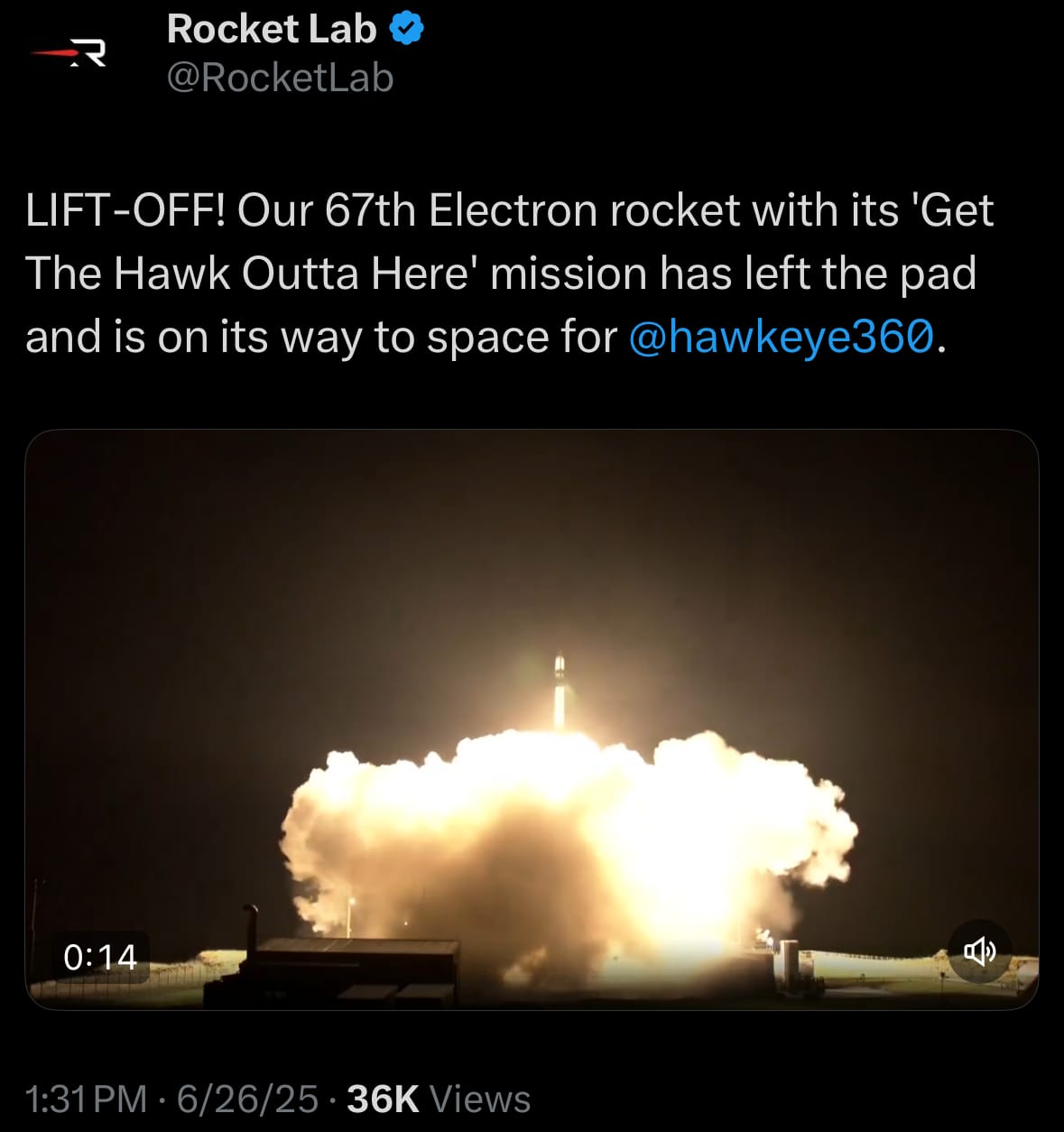Friday☕️

Economics & Markets:
- Today’s stock market:

- Today’s commodity market:

- Yesterday crypto market:

Environment & Weather:
- On June 27, 2025, flash floods struck Chiang Rai province in northern Thailand, impacting over 4,405 households due to heavy rainfall and mountain runoff. The floods submerged approximately 80 hectares (198 acres) of rice fields and damaged infrastructure, including roads and two health centers. Districts such as Phaya Mengrai, Wiang Chai, Chiang Saen, Wiang Chiang Rung, and Thoeng reported flooded farmland, road closures, and disrupted access, with a key bridge along Khun Mae Pao Creek in Phaya Mengrai rendered impassable. The flooding, particularly in areas like Ban Mae Pao, disrupted daily life and local livelihoods.

- Relief operations are ongoing, with the Ministry of Defence assisting in evacuations and providing aid in Phaya Mengrai and Wiang Chai, where large-scale evacuations occurred. The Provincial Disaster Prevention Command has directed all districts to maintain round-the-clock response teams and conduct damage assessments. With additional rainfall forecast, the region remains vulnerable to further flooding. Local authorities are distributing food, shelter, and medical supplies to affected residents, while the extent of agricultural and infrastructure damage continues to be evaluated.
Space:
- On June 26, 2025, Rocket Lab conducted its 67th Electron mission, “Get The Hawk Outta Here,” launching from Launch Complex 1A on New Zealand’s Māhia Peninsula at 5:28 a.m. NZDT (1:28 p.m. EDT). The mission deployed four satellites for HawkEye 360 into a 520 km polar orbit, consisting of three radio frequency geolocation satellites and one experimental Kestral-0A satellite. These satellites are designed for maritime tracking, environmental monitoring, and security purposes. This launch was Rocket Lab’s ninth from Launch Complex 1 in 2025, with another mission planned within 48 hours.

- The mission achieved successful satellite deployment, contributing to Rocket Lab’s total of 231 payloads delivered to orbit. It was the company’s second launch for HawkEye 360, supporting the client’s radio frequency data services. The launch proceeded without reported issues, as confirmed by Rocket Lab and industry sources. The mission aligns with the growing demand for small satellite launches, and Rocket Lab’s ability to maintain a frequent launch schedule highlights its operational capacity in the commercial space sector.
Science & Technology:
- On June 26, 2025, Anthropic announced an update to its Claude Desktop platform, introducing a one-click installation feature for local MCP (Model Control Platform) servers. This update simplifies AI model deployment through Desktop Extensions (.dxt files), which package servers, manage dependencies like macOS and Node.js, and provide secure configuration options. A screenshot of the “Control Chrome” extension, version 0.1 with an MIT license, showcased functions such as “open_url” and “get_current_tab,” indicating potential browser integration for automation or AI-driven tasks.

- The Model Control Platform (MCP) is a core component of Anthropic’s Claude Desktop ecosystem, designed to enable users to deploy and manage AI models locally with greater ease and control. MCP servers facilitate the execution of AI tasks by providing a framework for configuring and running models securely on a user’s own hardware, reducing reliance on cloud-based solutions. The one-click installation feature streamlines the setup process, making it accessible to developers and enthusiasts who seek to customize AI applications. While the announcement highlights browser-related capabilities through extensions like “Control Chrome,” further documentation may be needed to clarify MCP’s full range of features, system requirements, and potential use cases, such as advanced automation or localized AI-driven workflows.
Statistic:
- Largest public companies by market capitalization:
- 🇺🇸 NVIDIA: $3.829T
- 🇺🇸 Microsoft: $3.688T
- 🇺🇸 Apple: $3.007T
- 🇺🇸 Amazon: $2.315T
- 🇺🇸 Alphabet (Google): $2.101T
- 🇺🇸 Meta Platforms (Facebook): $1.837T
- 🇸🇦 Saudi Aramco: $1.567T
- 🇺🇸 Broadcom: $1.266T
- 🇹🇼 TSMC: $1.177T
- 🇺🇸 Berkshire Hathaway: $1.050T
- 🇺🇸 Tesla: $1.037T
- 🇺🇸 JPMorgan Chase: $796.89B
- 🇺🇸 Walmart: $777.21B
- 🇺🇸 Eli Lilly: $699.52B
- 🇺🇸 Visa: $683.10B
- 🇺🇸 Oracle: $596.30B
- 🇨🇳 Tencent: $592.53B
- 🇺🇸 Netflix: $563.25B
- 🇺🇸 Mastercard: $502.48B
- 🇺🇸 Exxon Mobil: $469.85B
- 🇺🇸 Costco: $438.60B
- 🇺🇸 Procter & Gamble: $372.47B
- 🇺🇸 Johnson & Johnson: $366.45B
- 🇺🇸 Home Depot: $365.33B
- 🇺🇸 Bank of America: $355.27B
History:
- The North Atlantic Treaty Organization (NATO) was established on April 4, 1949, when 12 nations—Belgium, Canada, Denmark, France, Iceland, Italy, Luxembourg, the Netherlands, Norway, Portugal, the United Kingdom, and the United States—signed the North Atlantic Treaty in Washington, D.C. Conceived during the early Cold War to counter Soviet expansion, NATO’s core principle, enshrined in Article 5, commits members to collective defense, treating an attack on one as an attack on all. The alliance responded to escalating tensions, such as the 1948 Berlin Blockade, by creating a unified military framework, with the Supreme Allied Commander Europe (SACEUR) position established in 1951. NATO expanded early, admitting Greece and Turkey in 1952 and West Germany in 1955, while the Korean War (1950–1953) reinforced the need for a robust Western alliance. Throughout the Cold War, NATO focused on deterrence, maintaining a defensive posture against the Soviet-led Warsaw Pact, strengthening its military integration, and fostering political cohesion among members.
- After the Soviet Union’s collapse in 1991, NATO adapted to a new security environment, shifting toward crisis management, peacekeeping, and global partnerships. It undertook military operations in Bosnia (1995) and Kosovo (1999) and expanded eastward, incorporating former Warsaw Pact states like Poland, Hungary, and the Czech Republic in 1999, followed by the Baltic states and others in 2004. The 2001 invocation of Article 5 after the September 11 attacks led to NATO’s mission in Afghanistan (2001–2021). Russia’s actions, including the 2014 annexation of Crimea and the 2022 invasion of Ukraine, prompted NATO to bolster its Eastern European defenses. This geopolitical shift also drove historically neutral Finland and Sweden to seek membership, with Finland joining on April 4, 2023, and Sweden on March 7, 2024, bringing NATO to 32 members. Today, NATO continues to prioritize collective defense, counterterrorism, and emerging threats like cyberattacks and China’s growing influence, solidifying its role as a pillar of global security.
Image of the day:

Thanks for reading!
Earth is complicated, we make it simple.
Click image to view the Earth Intelligence System:



Support/Suggestions Email:
earthintelligence@earthintel.news




